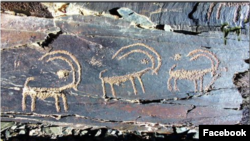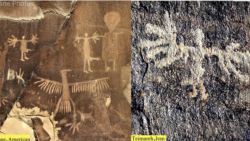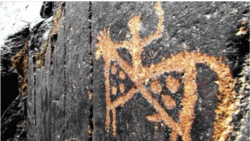An Iranian prehistoric rock art specialist, Dr. Mohammad Naserifard, says some rock art found in Iran and North America support the theory of migrations from Asia to North-America in prehistoric times.
Dr. Naserifard who was quoted by the Islamic Republic News Agency (IRNA) on Tuesday, has for more than a decade explored the country for rock etchings (petroglyphs) and rock and cave paintings (pictographs) and discovered thousands. He believes his findings indicate that humans had developed an artistic tradition before dispersing from the Middle East to the rest of the Asian continent and to North America in prehistoric times.
Genetic and paleontological records have now established that hunter-gatherer humans were very mobile, migrating from Africa between 60,000 and 70,000 years ago to the Middle East and from there to the rest of the world.
Humans appear to have arrived in North America around 15,000 years ago when a land bridge connecting the Old World to the New emerged from under ice sheets formed during the Last Glacial Maximum.
Dr. Naserifard says similarities between cave and rock art in America and what he has found in Iran are too striking to be ignored. Among the petroglyphs that he has discovered is a winged man etched on rock face in the remote valley of Taimareh near the city of Khomein in central Iran which has striking similarities with the winged man petroglyph of the Yellowstone National Park.
Taimareh valley is home to thousands of petroglyphs dating as far back as 17,000 years ago including a unique "squatter mantis man". The petroglyph is about 14 centimeters and was first spotted by him in 2017 during one of his excursions.
Another example that he cites are petroglyphs in Moab, Utah, showing mountain goats with another goat between their horns that look almost identical to etchings on a rock face in Taimareh.
Also among Dr. Naserifard's findings that suggest a prehistoric artistic tradition are pictographs of leopard-spotted horses on the walls of caves and the mountains of Qasr-e Qand and Nikshahr in southeast Iran which date back to 11,000 years ago. Pictographs of leopard horses have also been found in Pech Merle cave in France's Occitania region from approximately 25,000 years ago.








